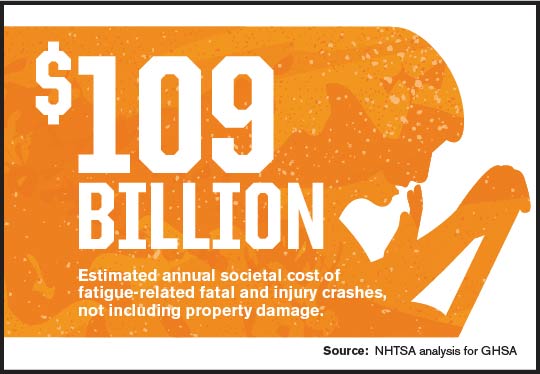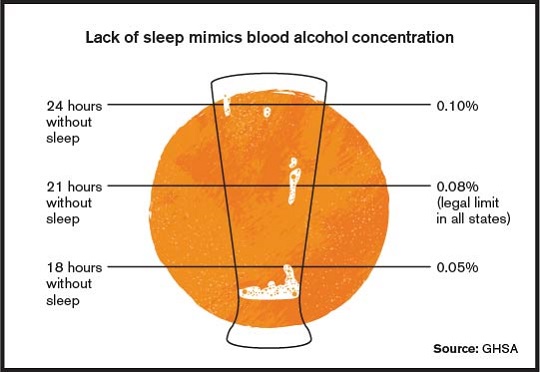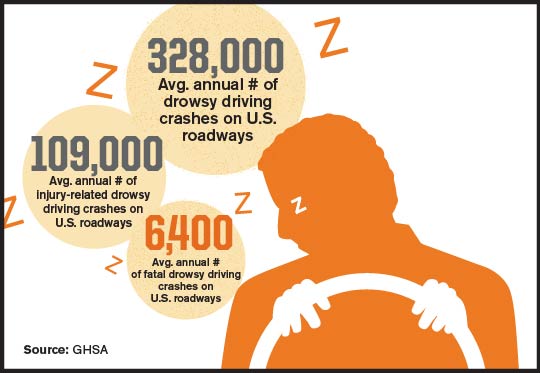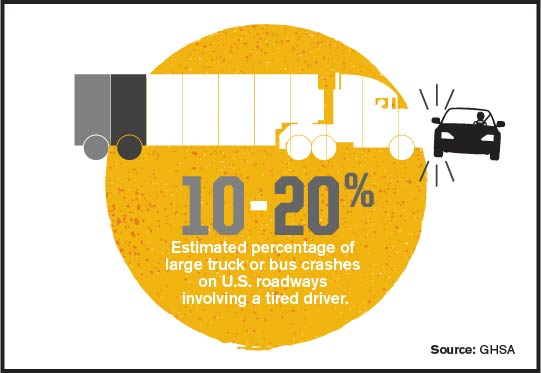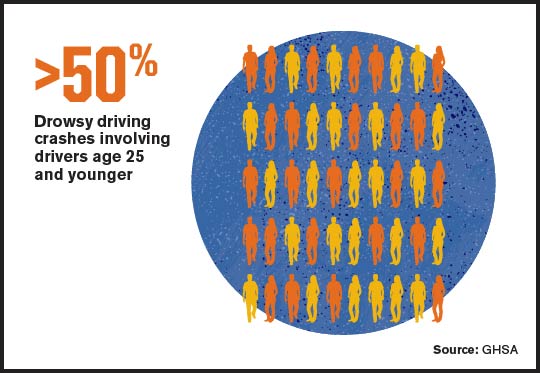Wake Up Call! Understanding Drowsy Driving and What States Can Do


This report, made possible through funding from State Farm®, examines what drowsy driving is and how to address it.


This report, made possible through funding from State Farm®, examines what drowsy driving is and how to address it.
This comprehensive, first-of-its-kind report, made possible through funding from State Farm®, examines the cause and effect of drowsy driving as well as how states and others can best address it.
Wake Up Call! discusses legislative, enforcement, education, and engineering countermeasures being employed as well as in-vehicle technologies that are available today or on the horizon. Also provided are examples of some state best practices to address the issue, including efforts in Iowa, New York, Texas and Utah.
The report was researched and written by Pam Fischer, Principal of Pam Fischer Consulting. GHSA worked with a panel of experts (listed below) to develop the report and identify the key takeaways and featured programs.

Please cite the Governors Highway Safety Association when using the graphics below. Right click on each graphic, then select "save image as..." to download it. If you're sharing on social media, consider tagging us at @ghsahq on X, @GHSAhq on Facebook and Governors Highway Safety Association (GHSA) on LinkedIn.
